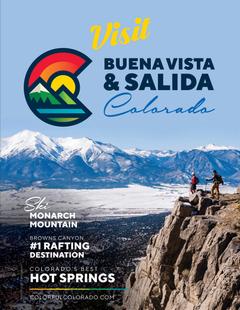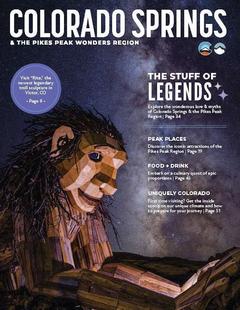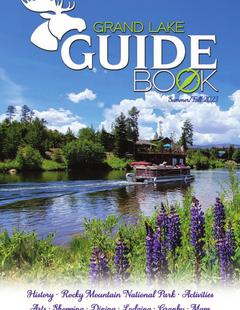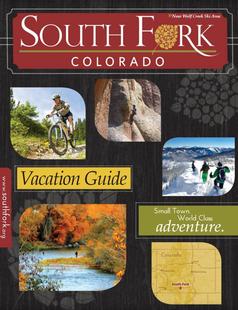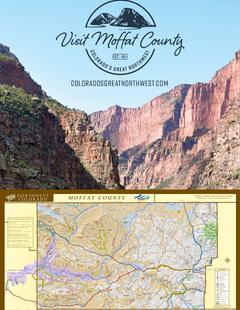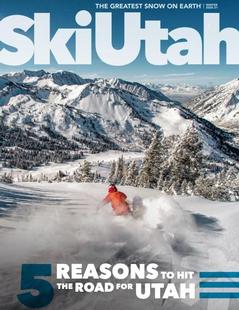Basics
- Length:
- 2069 miles (3329 km)
- Time:
- Six days to drive or ten days to enjoy the entire Byway.
Description
In sheer size and importance, the Mississippi River has few equals. Hundreds of years ago, Native Americans used it for trade and travel, with the Hopewell Indian culture becoming the most advanced society in early North America. The French sent trappers down its banks after coveted beaver fur. For years, it served as the western boundary of America, providing the next western frontier as the United States acquired new lands. Western settlements expanded along the river, with their rugged pioneers doing their best to tame the mighty river country.
Today, the Great River Road National Scenic Byway incorporates riverside roads in six of the ten states that border the Mississippi: Arkansas, Illinois, Iowa, Minnesota, Mississippi, and Wisconsin. From the river's beginning in the lakes of Minnesota down to the historic Vicksburg region of Mississippi, the natural beauty and cultural heritage along the Great River Road is as varied as the regions it passes through.
Visitors can explore the Hopewell Mounds that line the Mississippi through several states, visit river towns unchanged since the 18th Century, and participate in interactive museums that display life along the Mississippi from past to present. The forested hills and striking bluffs provide a constantly changing view, and visitors can view the successful restoration of the American Bald Eagle in its riverside habitat.
Whether learning about the vast river history or watching a peaceful sunset reflected in a mile of inland water, visitors to the Great River Road National Scenic Byway will leave with a greater awe and appreciation for one of America's greatest natural wonders.
Points of Interest
Points of Interest Along The Way
Arkansas City (AR)
With numerous others long-since claimed by the river, ArkansasCity is one of the few remaining examples of an old riverport townalong the Mississippi River in Eastern Arkansas. Arkansas City wasa thriving steamboat landing as early as 1834 and was incorporatedas a city in 1873. It was settled by refugees from nearby Napoleon,which was devastasted by two major floods and completely washedaway by the river in 1874. Arkansas City became the county seat in1881. At one time, it had a population of 15,000 people, comparedto 589 today.
The town includes a downtown walking tour and numerousstructures on the National Historic Register, including the 1900Romanesque revival courthouse, recognized as one of the mostarchitecturally significant structures in southeast Arkansas.Arkansas City was home to John Johnson, founder and publisher ofEbony Magazine. His home is being restored by the University of Arkansas at Pine Bluff as an African-American Cultural and Entrepreneurial Center.
Directions
Off of State Highway 4.
Arkansas City (IA)
Directions
Off of State Highway 4.
Arkansas City (IA)
With numerous others long-since claimed by the river, ArkansasCity is one of the few remaining examples of an old riverport townalong the Mississippi River in Eastern Arkansas. Arkansas City wasa thriving steamboat landing as early as 1834 and was incorporatedas a city in 1873. It was settled by refugees from nearby Napoleon,which was devastasted by two major floods and completely washedaway by the river in 1874. Arkansas City became the county seat in1881. At one time, it had a population of 15,000 people, comparedto 589 today.
The town includes a downtown walking tour and numerousstructures on the National Historic Register, including the 1900Romanesque revival courthouse, recognized as one of the mostarchitecturally significant structures in southeast Arkansas.Arkansas City was home to John Johnson, founder and publisher ofEbony Magazine. His home is being restored by the University of Arkansas at Pine Bluff as an African-American Cultural and Entrepreneurial Center.
Directions
Off of State Highway 4.
Arkansas City (IL)
With numerous others long-since claimed by the river, ArkansasCity is one of the few remaining examples of an old riverport townalong the Mississippi River in Eastern Arkansas. Arkansas City wasa thriving steamboat landing as early as 1834 and was incorporatedas a city in 1873. It was settled by refugees from nearby Napoleon,which was devastasted by two major floods and completely washedaway by the river in 1874. Arkansas City became the county seat in1881. At one time, it had a population of 15,000 people, comparedto 589 today.
The town includes a downtown walking tour and numerousstructures on the National Historic Register, including the 1900Romanesque revival courthouse, recognized as one of the mostarchitecturally significant structures in southeast Arkansas.Arkansas City was home to John Johnson, founder and publisher ofEbony Magazine. His home is being restored by the University of Arkansas at Pine Bluff as an African-American Cultural and Entrepreneurial Center.
Directions
Off of State Highway 4.
Arkansas City (MN)
With numerous others long-since claimed by the river, ArkansasCity is one of the few remaining examples of an old riverport townalong the Mississippi River in Eastern Arkansas. Arkansas City wasa thriving steamboat landing as early as 1834 and was incorporatedas a city in 1873. It was settled by refugees from nearby Napoleon,which was devastasted by two major floods and completely washedaway by the river in 1874. Arkansas City became the county seat in1881. At one time, it had a population of 15,000 people, comparedto 589 today.
The town includes a downtown walking tour and numerousstructures on the National Historic Register, including the 1900Romanesque revival courthouse, recognized as one of the mostarchitecturally significant structures in southeast Arkansas.Arkansas City was home to John Johnson, founder and publisher ofEbony Magazine. His home is being restored by the University of Arkansas at Pine Bluff as an African-American Cultural and Entrepreneurial Center.
Directions
Off of State Highway 4.
Arkansas City (MO)
With numerous others long-since claimed by the river, ArkansasCity is one of the few remaining examples of an old riverport townalong the Mississippi River in Eastern Arkansas. Arkansas City wasa thriving steamboat landing as early as 1834 and was incorporatedas a city in 1873. It was settled by refugees from nearby Napoleon,which was devastasted by two major floods and completely washedaway by the river in 1874. Arkansas City became the county seat in1881. At one time, it had a population of 15,000 people, comparedto 589 today.
The town includes a downtown walking tour and numerousstructures on the National Historic Register, including the 1900Romanesque revival courthouse, recognized as one of the mostarchitecturally significant structures in southeast Arkansas.Arkansas City was home to John Johnson, founder and publisher ofEbony Magazine. His home is being restored by the University of Arkansas at Pine Bluff as an African-American Cultural and Entrepreneurial Center.
Directions
Off of State Highway 4.
Arkansas City (MS)
With numerous others long-since claimed by the river, ArkansasCity is one of the few remaining examples of an old riverport townalong the Mississippi River in Eastern Arkansas. Arkansas City wasa thriving steamboat landing as early as 1834 and was incorporatedas a city in 1873. It was settled by refugees from nearby Napoleon,which was devastasted by two major floods and completely washedaway by the river in 1874. Arkansas City became the county seat in1881. At one time, it had a population of 15,000 people, comparedto 589 today.
The town includes a downtown walking tour and numerousstructures on the National Historic Register, including the 1900Romanesque revival courthouse, recognized as one of the mostarchitecturally significant structures in southeast Arkansas.Arkansas City was home to John Johnson, founder and publisher ofEbony Magazine. His home is being restored by the University of Arkansas at Pine Bluff as an African-American Cultural and Entrepreneurial Center.
Directions
Off of State Highway 4.
Arkansas Post National Memorial (AR)
This is where Arkansas history literally began. On a bluff nearthe Arkansas River, the birthplace of Arkansas and the firstpermanent European settlement in the lower Mississippi River Valleyis marked with 20-foot crosses similar to those planted by Frenchexplorers in 1686. It was at this spot that Henri de Tonti and hisparty built a small settlement and claimed the land for God andking. The French were traders with the local Quapaws (Arkancas tothe French) and named their encampment Pose de Arkansea -- Arkansas Post.
The site today includes a visitor center, museum, markeddriving route, and picnic facilities. It also contains the January11, 1863 battlefield where Union troops defeated Confederatedefenders at Fort Hindman on the Arkansas River. Remnants of theConfederate trenches can still be seen. The battle is interpretedat the park museum.
Directions
Just two miles off of US Highway 165
Arkansas Post National Memorial (IA)
This is where Arkansas history literally began. On a bluff nearthe Arkansas River, the birthplace of Arkansas and the firstpermanent European settlement in the lower Mississippi River Valleyis marked with 20-foot crosses similar to those planted by Frenchexplorers in 1686. It was at this spot that Henri de Tonti and hisparty built a small settlement and claimed the land for God andking. The French were traders with the local Quapaws (Arkancas tothe French) and named their encampment Pose de Arkansea -- Arkansas Post.
The site today includes a visitor center, museum, markeddriving route, and picnic facilities. It also contains the January11, 1863 battlefield where Union troops defeated Confederatedefenders at Fort Hindman on the Arkansas River. Remnants of theConfederate trenches can still be seen. The battle is interpretedat the park museum.
Directions
Just two miles off of US Highway 165
Arkansas Post National Memorial (IL)
This is where Arkansas history literally began. On a bluff nearthe Arkansas River, the birthplace of Arkansas and the firstpermanent European settlement in the lower Mississippi River Valleyis marked with 20-foot crosses similar to those planted by Frenchexplorers in 1686. It was at this spot that Henri de Tonti and hisparty built a small settlement and claimed the land for God andking. The French were traders with the local Quapaws (Arkancas tothe French) and named their encampment Pose de Arkansea -- Arkansas Post.
The site today includes a visitor center, museum, markeddriving route, and picnic facilities. It also contains the January11, 1863 battlefield where Union troops defeated Confederatedefenders at Fort Hindman on the Arkansas River. Remnants of theConfederate trenches can still be seen. The battle is interpretedat the park museum.
Directions
Just two miles off of US Highway 165
Arkansas Post National Memorial (MN)
This is where Arkansas history literally began. On a bluff nearthe Arkansas River, the birthplace of Arkansas and the firstpermanent European settlement in the lower Mississippi River Valleyis marked with 20-foot crosses similar to those planted by Frenchexplorers in 1686. It was at this spot that Henri de Tonti and hisparty built a small settlement and claimed the land for God andking. The French were traders with the local Quapaws (Arkancas tothe French) and named their encampment Pose de Arkansea -- Arkansas Post.
The site today includes a visitor center, museum, markeddriving route, and picnic facilities. It also contains the January11, 1863 battlefield where Union troops defeated Confederatedefenders at Fort Hindman on the Arkansas River. Remnants of theConfederate trenches can still be seen. The battle is interpretedat the park museum.
Directions
Just two miles off of US Highway 165
Arkansas Post National Memorial (MO)
This is where Arkansas history literally began. On a bluff nearthe Arkansas River, the birthplace of Arkansas and the firstpermanent European settlement in the lower Mississippi River Valleyis marked with 20-foot crosses similar to those planted by Frenchexplorers in 1686. It was at this spot that Henri de Tonti and hisparty built a small settlement and claimed the land for God andking. The French were traders with the local Quapaws (Arkancas tothe French) and named their encampment Pose de Arkansea -- Arkansas Post.
The site today includes a visitor center, museum, markeddriving route, and picnic facilities. It also contains the January11, 1863 battlefield where Union troops defeated Confederatedefenders at Fort Hindman on the Arkansas River. Remnants of theConfederate trenches can still be seen. The battle is interpretedat the park museum.
Directions
Just two miles off of US Highway 165
Arkansas Post National Memorial (MS)
This is where Arkansas history literally began. On a bluff nearthe Arkansas River, the birthplace of Arkansas and the firstpermanent European settlement in the lower Mississippi River Valleyis marked with 20-foot crosses similar to those planted by Frenchexplorers in 1686. It was at this spot that Henri de Tonti and hisparty built a small settlement and claimed the land for God andking. The French were traders with the local Quapaws (Arkancas tothe French) and named their encampment Pose de Arkansea -- Arkansas Post.
The site today includes a visitor center, museum, markeddriving route, and picnic facilities. It also contains the January11, 1863 battlefield where Union troops defeated Confederatedefenders at Fort Hindman on the Arkansas River. Remnants of theConfederate trenches can still be seen. The battle is interpretedat the park museum.
Directions
Just two miles off of US Highway 165
Arkansas Post State Park Museum (AR)
Five buildings have lifestyle exhibits from Colonial to moderntimes. The exhibits include a dog-trot log cabin, 1930s furnishedplayhouse, Quapaw pottery, covered wagon, and agriculturalequipment.
Directions
Off of US Highway 165
Arkansas Post State Park Museum (IA)
Five buildings have lifestyle exhibits from Colonial to moderntimes. The exhibits include a dog-trot log cabin, 1930s furnishedplayhouse, Quapaw pottery, covered wagon, and agriculturalequipment.
Directions
Off of US Highway 165
Arkansas Post State Park Museum (IL)
Five buildings have lifestyle exhibits from Colonial to moderntimes. The exhibits include a dog-trot log cabin, 1930s furnishedplayhouse, Quapaw pottery, covered wagon, and agriculturalequipment.
Directions
Off of US Highway 165
Arkansas Post State Park Museum (MN)
Five buildings have lifestyle exhibits from Colonial to moderntimes. The exhibits include a dog-trot log cabin, 1930s furnishedplayhouse, Quapaw pottery, covered wagon, and agriculturalequipment.
Directions
Off of US Highway 165
Arkansas Post State Park Museum (MO)
Five buildings have lifestyle exhibits from Colonial to moderntimes. The exhibits include a dog-trot log cabin, 1930s furnishedplayhouse, Quapaw pottery, covered wagon, and agriculturalequipment.
Directions
Off of US Highway 165
Arkansas Post State Park Museum (MS)
Five buildings have lifestyle exhibits from Colonial to moderntimes. The exhibits include a dog-trot log cabin, 1930s furnishedplayhouse, Quapaw pottery, covered wagon, and agriculturalequipment.
Directions
Off of US Highway 165
Barfield Landing Spur (AR)
This view of the Mississippi River, due east of Blytheville on State Highway 18, clearly demonstrates its role as a working river. Visitors are apt to find numerous barges lined up to serve the world-class steel plants nearby.
Directions
Due east of Blytheville on S. H. 18
Barfield Landing Spur (IA)
This view of the Mississippi River, due east of Blytheville on State Highway 18, clearly demonstrates its role as a working river. Visitors are apt to find numerous barges lined up to serve the world-class steel plants nearby.
Directions
Due east of Blytheville on S. H. 18
Barfield Landing Spur (IL)
This view of the Mississippi River, due east of Blytheville on State Highway 18, clearly demonstrates its role as a working river. Visitors are apt to find numerous barges lined up to serve the world-class steel plants nearby.
Directions
Due east of Blytheville on S. H. 18
Barfield Landing Spur (MN)
This view of the Mississippi River, due east of Blytheville on State Highway 18, clearly demonstrates its role as a working river. Visitors are apt to find numerous barges lined up to serve the world-class steel plants nearby.
Directions
Due east of Blytheville on S. H. 18
Barfield Landing Spur (MO)
This view of the Mississippi River, due east of Blytheville on State Highway 18, clearly demonstrates its role as a working river. Visitors are apt to find numerous barges lined up to serve the world-class steel plants nearby.
Directions
Due east of Blytheville on S. H. 18
Barfield Landing Spur (MS)
This view of the Mississippi River, due east of Blytheville on State Highway 18, clearly demonstrates its role as a working river. Visitors are apt to find numerous barges lined up to serve the world-class steel plants nearby.
Directions
Due east of Blytheville on S. H. 18
Bayou Meto Wildlife Management Area (AR)
One of the largest state-owned wildlife management areas in thenation, Bayou Meto encompasses 33,700 acres. The area includeseight permanent streams (Five Forks, Wabbaseka Bayou, GovernmentCypress Slough, Bear Bayou, Dry Bayou, West Bayou, Cross Bayou,Little Bayou Meto, and Big Bayou Meto), 12 intermediate streams andsix lakes.
Green-timber duck hunting is some of the best in the state andconstitutes the heaviest recreational use of the area. There are 52primitive camp sites scattered over the area. Other specialfacilities include an archery range, concrete boat ramps, and anobservation tower for viewing waterfowl and shorebirds.
Directions
Off of US Highway 165
Bayou Meto Wildlife Management Area (IA)
One of the largest state-owned wildlife management areas in thenation, Bayou Meto encompasses 33,700 acres. The area includeseight permanent streams (Five Forks, Wabbaseka Bayou, GovernmentCypress Slough, Bear Bayou, Dry Bayou, West Bayou, Cross Bayou,Little Bayou Meto, and Big Bayou Meto), 12 intermediate streams andsix lakes.
Green-timber duck hunting is some of the best in the state andconstitutes the heaviest recreational use of the area. There are 52primitive camp sites scattered over the area. Other specialfacilities include an archery range, concrete boat ramps, and anobservation tower for viewing waterfowl and shorebirds.
Directions
Off of US Highway 165
Bayou Meto Wildlife Management Area (IL)
One of the largest state-owned wildlife management areas in thenation, Bayou Meto encompasses 33,700 acres. The area includeseight permanent streams (Five Forks, Wabbaseka Bayou, GovernmentCypress Slough, Bear Bayou, Dry Bayou, West Bayou, Cross Bayou,Little Bayou Meto, and Big Bayou Meto), 12 intermediate streams andsix lakes.
Green-timber duck hunting is some of the best in the state andconstitutes the heaviest recreational use of the area. There are 52primitive camp sites scattered over the area. Other specialfacilities include an archery range, concrete boat ramps, and anobservation tower for viewing waterfowl and shorebirds.
Directions
Off of US Highway 165
Bayou Meto Wildlife Management Area (MN)
One of the largest state-owned wildlife management areas in thenation, Bayou Meto encompasses 33,700 acres. The area includeseight permanent streams (Five Forks, Wabbaseka Bayou, GovernmentCypress Slough, Bear Bayou, Dry Bayou, West Bayou, Cross Bayou,Little Bayou Meto, and Big Bayou Meto), 12 intermediate streams andsix lakes.
Green-timber duck hunting is some of the best in the state andconstitutes the heaviest recreational use of the area. There are 52primitive camp sites scattered over the area. Other specialfacilities include an archery range, concrete boat ramps, and anobservation tower for viewing waterfowl and shorebirds.
Directions
Off of US Highway 165
Bayou Meto Wildlife Management Area (MO)
One of the largest state-owned wildlife management areas in thenation, Bayou Meto encompasses 33,700 acres. The area includeseight permanent streams (Five Forks, Wabbaseka Bayou, GovernmentCypress Slough, Bear Bayou, Dry Bayou, West Bayou, Cross Bayou,Little Bayou Meto, and Big Bayou Meto), 12 intermediate streams andsix lakes.
Green-timber duck hunting is some of the best in the state andconstitutes the heaviest recreational use of the area. There are 52primitive camp sites scattered over the area. Other specialfacilities include an archery range, concrete boat ramps, and anobservation tower for viewing waterfowl and shorebirds.
Directions
Off of US Highway 165
Bayou Meto Wildlife Management Area (MS)
One of the largest state-owned wildlife management areas in thenation, Bayou Meto encompasses 33,700 acres. The area includeseight permanent streams (Five Forks, Wabbaseka Bayou, GovernmentCypress Slough, Bear Bayou, Dry Bayou, West Bayou, Cross Bayou,Little Bayou Meto, and Big Bayou Meto), 12 intermediate streams andsix lakes.
Green-timber duck hunting is some of the best in the state andconstitutes the heaviest recreational use of the area. There are 52primitive camp sites scattered over the area. Other specialfacilities include an archery range, concrete boat ramps, and anobservation tower for viewing waterfowl and shorebirds.
Directions
Off of US Highway 165
Bear Creek Lake (AR)
This 625-acre lake area includes three campgrounds (twoindividual, one group), two picnic areas, one nature trail withinterpretive signs, a swimming area, a boat ramp, and abundantbream and bass fishing. Bear Creek Nature Trail provides a one-mile loop winding through groves of large specimens of native trees. There are excellent scenic views of the lake shoreline, including Beech Point.
Directions
Off of State Highway 44
Bear Creek Lake (IA)
This 625-acre lake area includes three campgrounds (twoindividual, one group), two picnic areas, one nature trail withinterpretive signs, a swimming area, a boat ramp, and abundantbream and bass fishing. Bear Creek Nature Trail provides a one-mile loop winding through groves of large specimens of native trees. There are excellent scenic views of the lake shoreline, including Beech Point.
Directions
Off of State Highway 44
Bear Creek Lake (IL)
This 625-acre lake area includes three campgrounds (twoindividual, one group), two picnic areas, one nature trail withinterpretive signs, a swimming area, a boat ramp, and abundantbream and bass fishing. Bear Creek Nature Trail provides a one-mile loop winding through groves of large specimens of native trees. There are excellent scenic views of the lake shoreline, including Beech Point.
Directions
Off of State Highway 44
Bear Creek Lake (MN)
This 625-acre lake area includes three campgrounds (twoindividual, one group), two picnic areas, one nature trail withinterpretive signs, a swimming area, a boat ramp, and abundantbream and bass fishing. Bear Creek Nature Trail provides a one-mile loop winding through groves of large specimens of native trees. There are excellent scenic views of the lake shoreline, including Beech Point.
Directions
Off of State Highway 44
Bear Creek Lake (MO)
This 625-acre lake area includes three campgrounds (twoindividual, one group), two picnic areas, one nature trail withinterpretive signs, a swimming area, a boat ramp, and abundantbream and bass fishing. Bear Creek Nature Trail provides a one-mile loop winding through groves of large specimens of native trees. There are excellent scenic views of the lake shoreline, including Beech Point.
Directions
Off of State Highway 44
Bear Creek Lake (MS)
This 625-acre lake area includes three campgrounds (twoindividual, one group), two picnic areas, one nature trail withinterpretive signs, a swimming area, a boat ramp, and abundantbream and bass fishing. Bear Creek Nature Trail provides a one-mile loop winding through groves of large specimens of native trees. There are excellent scenic views of the lake shoreline, including Beech Point.
Directions
Off of State Highway 44
Big Lake National Wildlife Refuge (AR)
Due west of Blytheville on State Highway 18, this refuge is animportant area for migrating and wintering waterfowl andneo-tropical birds in the Lower Mississippi River Ecosystem. Therefuge basin is thought to have formed from the New Madridearthquake of 1811-12 and is fed by the Little River. It containsMallard Lake where the state record largemouth bass was caught.
Directions
Due west of Blytheville on S. H. 18.
Big Lake National Wildlife Refuge (IA)
Due west of Blytheville on State Highway 18, this refuge is animportant area for migrating and wintering waterfowl andneo-tropical birds in the Lower Mississippi River Ecosystem. Therefuge basin is thought to have formed from the New Madridearthquake of 1811-12 and is fed by the Little River. It containsMallard Lake where the state record largemouth bass was caught.
Directions
Due west of Blytheville on S. H. 18.
Big Lake National Wildlife Refuge (IL)
Due west of Blytheville on State Highway 18, this refuge is animportant area for migrating and wintering waterfowl andneo-tropical birds in the Lower Mississippi River Ecosystem. Therefuge basin is thought to have formed from the New Madridearthquake of 1811-12 and is fed by the Little River. It containsMallard Lake where the state record largemouth bass was caught.
Directions
Due west of Blytheville on S. H. 18.
Big Lake National Wildlife Refuge (MN)
Due west of Blytheville on State Highway 18, this refuge is animportant area for migrating and wintering waterfowl andneo-tropical birds in the Lower Mississippi River Ecosystem. Therefuge basin is thought to have formed from the New Madridearthquake of 1811-12 and is fed by the Little River. It containsMallard Lake where the state record largemouth bass was caught.
Directions
Due west of Blytheville on S. H. 18.
Big Lake National Wildlife Refuge (MO)
Due west of Blytheville on State Highway 18, this refuge is animportant area for migrating and wintering waterfowl andneo-tropical birds in the Lower Mississippi River Ecosystem. Therefuge basin is thought to have formed from the New Madridearthquake of 1811-12 and is fed by the Little River. It containsMallard Lake where the state record largemouth bass was caught.
Directions
Due west of Blytheville on S. H. 18.
Big Lake National Wildlife Refuge (MS)
Due west of Blytheville on State Highway 18, this refuge is animportant area for migrating and wintering waterfowl andneo-tropical birds in the Lower Mississippi River Ecosystem. Therefuge basin is thought to have formed from the New Madridearthquake of 1811-12 and is fed by the Little River. It containsMallard Lake where the state record largemouth bass was caught.
Directions
Due west of Blytheville on S. H. 18.
Blue Lake (AR)
Blue Lake offers swimming on a sand beach lake, fishing, and picnic areas.
Directions
17 miles south of West Memphis
Blue Lake (IA)
Directions
17 miles south of West Memphis
Blue Lake (IA)
Blue Lake offers swimming on a sand beach lake, fishing, and picnic areas.
Directions
17 miles south of West Memphis
Blue Lake (IL)
Blue Lake offers swimming on a sand beach lake, fishing, and picnic areas.
Directions
17 miles south of West Memphis
Blue Lake (MN)
Blue Lake offers swimming on a sand beach lake, fishing, and picnic areas.
Directions
17 miles south of West Memphis
Blue Lake (MO)
Blue Lake offers swimming on a sand beach lake, fishing, and picnic areas.
Directions
17 miles south of West Memphis
Blue Lake (MS)
Blue Lake offers swimming on a sand beach lake, fishing, and picnic areas.
Directions
17 miles south of West Memphis
Blytheville (AR)
Blytheville was incorporated in 1891 as a lumber town andeventually grew into a cotton production and trading center. Thecounty seat for the Chickasawba District of Mississippi County, itfeatures a 1919-1921 Colonial Revival courthouse and four otherstructures on the National Historic Register.
Among its many attractions are the Blytheville Heritage Museum, the Ritz Civic Center, Mississippi County Community College events, That Bookstore in Blytheville (a frequent haunt of novelist JohnGrisham), and other speciality shops. The community is working with the National Park Service on the feasibility of a NationalArchaeological Heritage Center to interpret the numerous NativeAmerican sites in the region.
Directions
Northeastern Arkansas off of US Highway 61
Blytheville (IA)
Blytheville was incorporated in 1891 as a lumber town andeventually grew into a cotton production and trading center. Thecounty seat for the Chickasawba District of Mississippi County, itfeatures a 1919-1921 Colonial Revival courthouse and four otherstructures on the National Historic Register.
Among its many attractions are the Blytheville Heritage Museum, the Ritz Civic Center, Mississippi County Community College events, That Bookstore in Blytheville (a frequent haunt of novelist JohnGrisham), and other speciality shops. The community is working with the National Park Service on the feasibility of a NationalArchaeological Heritage Center to interpret the numerous NativeAmerican sites in the region.
Directions
Northeastern Arkansas off of US Highway 61
Blytheville (IL)
Blytheville was incorporated in 1891 as a lumber town andeventually grew into a cotton production and trading center. Thecounty seat for the Chickasawba District of Mississippi County, itfeatures a 1919-1921 Colonial Revival courthouse and four otherstructures on the Nat















